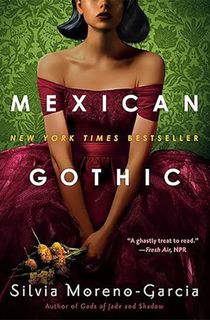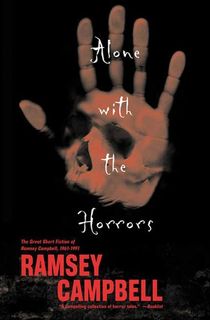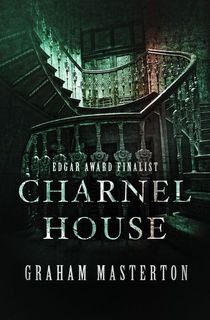T. Kingfisher’s creepy horror novella, What Moves the Dead, hits all the sweet spots. A retelling of Edgar Allan Poe’s Gothic horror story “The Fall of the House of Usher,” the book follows Alex Easton, a nonbinary retired soldier who visits their ailing childhood friend Madeline and her brother Roderick at their crumbling mansion in the remote countryside, infested with fungal blooms, strange hares, and a lake pulsing with secrets.
Eerie and evocative, the novella strikes a perfect balance between Gothic spookiness and body horror, with a wryly humorous narration and characters you end up caring about—even if they meet rather grisly ends. The author has written two other novellas in the series—also starring Alex Easton—along with several other fairytale retellings, horror tales and cozy novels, all brimming with atmospheric prose and compelling narrative arcs.
If you’re in the mood for horror books that focus more on that vague sense of ever-looming dread than on overt jump scares, these sinister reads will surely haunt you.

Things Have Gotten Worse Since We Last Spoke
Like What Moves the Dead, this one is also a short, clever, and very creepy novella that focuses on the toxic dynamic between two women who meet in an internet chatroom and embark on a sado-masochistic relationship. The story unfolds through a series of email exchanges—each more disturbing than the last, with some skin-crawling body horror scenes thrown in. It might seem disgusting at times, but I promise you that it’s absolutely unputdownable—a haunting sapphic romance gone wrong.

Mexican Gothic
If you have a soft spot for strange fungal growths like Miss Potter, the eccentric old lady mycologist in What Moves The Dead, you’ll undoubtedly enjoy Silvia Moreno-Garcia’s Mexican Gothic, one of the novels that clearly influenced T. Kingfisher’s novella. As the title suggests, this tale has all the familiar trappings of Gothic fiction with a seemingly haunted house far from the madding crowd, inhabited by racist aristocrats living in decadent opulence and hiding terrifying family secrets that the protagonist Noemí Taboada investigates to her own peril. Engaging and disturbing, Mexican Gothic carefully excavates the colonial scaffolding of the genre and rebuilds it anew.

Alone with the Horrors
One of the most prolific writers of horror fiction, Ramsey Campbell’s Alone with the Horrors collects around forty of his horror and fantasy stories from the first thirty years of his illustrious career. The collection itself won the Bram Stoker and World Fantasy Awards, and many of the individual stories have won prizes as well. Influenced by H.P Lovecraft, Campell’s stories bristle with an uncanny energy, evoking the sinister with just a few well-chosen phrases and descriptions. If you enjoy the works of Stephen King and M.R. James, this anthology is another masterpiece to add to your bookshelf.

Fruiting Bodies and Other Fungi
Another stunning collection from the '90s, Fruiting Bodies and Other Fungi is an anthology of dark fantasy and horror tales by Brian Lumley, author of the Necroscope series. There’s tremendous variety in the tales that manage to be fearful, bizarre, weird, and macabre in all the best ways. The title story in particular is rather atmospheric and will surely give you the creeps.

Charnel House
First published in 1978, Graham Masterton’s Charnel House skillfully blends Native American folklore, demonic possession, and a haunted house story in a gripping supernatural thriller. Tightly written and packed with twist and turns, this is a relatively straightforward horror story that will definitely give you the nightmares.

Honeybones
Now if you’d prefer a book that’s less straightforward horror and more creepy atmospherics, poetic prose and edged with surreal imagery, give Georgina Bruce’s Honeybones a try. This novella delves into childhood trauma and abusive relationships, unfolding in a house of illusions with creepy dolls and sing-song rhymes. It’s a dark, dreamy and twisted fairytale, retold in lyrical language that will haunt the reader long after they’ve turned the last page.
.png?w=640)
The Dangers of Smoking in Bed
For those who particularly enjoy horror short-story collections, Mariana Enriquez is an Argentine author who should be on your radar. She has published three collections till date (and one novel)—all of which are darkly brilliant. The Dangers of Smoking in Bed is a great place to start if you’re trying to get a feel of her work. Most of the tales unfold in contemporary Argentenia, populated with unhappy women, rebellious teenagers, lost ghosts and more. It’s a searing foray into the lives of those in the margins—their pains, struggles, and desires—portrayed with a chilling intensity.

Helpmeet
Naben Ruthnum’s Helpmeet is a creepy little novella that also features ailing characters on the verge of death, like Madeline Usher in What Moves The Dead. But while she’s confined to her crumbling manor, in Helpmeet the loyal Louise Wilk determinedly transports Edward, her dying unfaithful husband to his childhood home, doing her best to take care of him even as his body falls apart. Ruthnum doesn’t shy away from depicting the grisly details of body horror in all their vivid glory and as Edward’s life fades away, death becomes another transformative experience—weird, incomprehensible, and utterly unsettling.

Her Body and Other Parties
Finally, if atmospheric storytelling is your poison of choice, you’ll adore the erotic and unsettling stories in Carmen Maria Machado’s debut collection, rendered in luscious prose. Provocative, genre-bending and dreamily disturbing, her tales are somewhat reminiscent of Angela Carter’s The Bloody Chamber, with a strong focus on the violent horrors of womanhood. Be it the chilling opener “The Husband Stitch” or the visceral horror of “Real Women Have Bodies,” these elegantly crafted stories are heartbreaking and horrific in equal measure.




.png?w=640)

